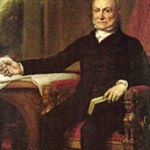The documentary film, “An Inconvenient Truth,” provides an unequivocally thorough and critical analysis of the current state of the physical terrestrial environment due to climate change and global warming, evaluating its socio-economic and political causes, and additionally providing a series of absolutely shockingly realistic prognoses, drawing inspiration and comparisons from dedicated scientific research and historical facts to show stunning parallels with mankind’s technological development in our temporal setting. Here, Al Gore, who many know as the Democratic candidate in the 2000 United States Presidential Election who ceded to George W. Bush (the Republican Candidate), aims to emphasize the detrimental effects that political, economic and general interests and development have had on the earth, particularly since the initiation of ” the modern environmental movement” with the Apollo Lunar missions.
The film opens with a breathtaking scene of what seems to be a river surrounded by vegetation, with an almost awestruck Gore commenting on the ease with which we forget the beauty of our planet. However, the scene quickly shifts to a saddened Gore commenting on the reluctant attitudes of many to accept the potential disaster that is global warming and climate change, highlighting recent extreme weather events such as Hurricane Katrina, which ravaged several states in the Southern United States. Subsequently, Gore is seen engaging an audience, again emphasizing the forgotten beauty of planet earth, using several snapshots from the Apollo lunar missions to do so. It is here that he begins a complete evaluation and explanation of the issue of global warming and climate change, criticizing numerous elements in society for their causal relationship with the issue, employing humorous political jeers and comments as a means of keeping his audience interested.
“What gets us into trouble isn’t what we don’t know; it’s what we know for sure that just ain’t so” -Mark Twain
This quote is consistently used by Gore to demonstrate the threat posed to the continued existence of the earth and consequently, to mankind, by ignorance, denial and the “scientific establishment” as Gore demonstrates in his address to his audience through anecdotes. Part of Gore’s presentation actually revolves around Twain’s wise words, as he seeks to correct the incorrect assumption that we are incapable of influencing a structure of grand magnitude such as our atmosphere. This leads him to present an explanation of the basic science of global warming, whereby he shows his audience a graphical representation of the increased retention of solar radiation due to increased amounts of greenhouse gasses in the thickening atmosphere.
This is followed by a satirical yet emphatic cartoon entitled “Global Warming or None Like it Hot,” which again expresses this “basic science” in even simpler terms. Gore periodically interrupts his address of the audience with his own personal and life experiences, in an exposition of sorts, beginning with his time in University and his introduction to intellectuals such as his professor, who was the first to suggest measuring greenhouse gases. Here, Gore gets to the meat of the matter with scientific data, outlining his efforts to improve awareness of global warming and climate change and his role in attempting to correct the issue.
Gore uses photographs of various landmarks in different temporal settings, e.g. Mount Kilimanjaro, to show the devastating effects on climate change, particularly on the earth’s ice masses. Gore makes a concerted effort to discredit skeptics in the film through the use of temperature data for the last millennium, showing that never before has such extreme warming been experienced, and using additional data dating back 600,000 years to show a clear relationship between CO2 levels and high temperatures.
“The era of procrastination, of half-measures, of soothing and baffling expedients, of delays, is coming to a close. In its place, we are entering a period of consequences.” Winston Churchill
Mr. Gore, once an active politician himself, opens by criticizing the actions of Congress and governing bodies, citing lost faith in a political establishment that he once trusted. Obviously saddened at his perceived failure and the retelling of the story of his son’s accident, Gore expresses another segment of his exposition to the audience. This flashback is interrupted, to allow Gore to present new evidence of global warming to his audience. He then moves towards outlining an incontrovertible relationship between warmer oceans, higher temperatures, and extreme weather events such as Hurricane Katrina. Here, his presentation is penetrated by graphic imagery and striking audio from the disaster. Gore continues his presentation of scientific evidence, showing the effects of global warming on living organisms, settlements, landmasses and disease vectors e.g. Avian Flu etc. Gore then goes on to make stunning predictions based on melting of the earth’s ice masses, showing possible outcomes for parts of the United States such as New York City. Gore comes to the conclusion, that “Old Habits+ Old Technology= Predictable Consequences.”
Gore uses the documentary film as a viable means of educating, arousing interest in, raising awareness of, and rectifying the problem of global warming and climate change, showing that we need to change our way of thinking for the future, through scientific evidence and his own personal experience, using the statements of historical figures, to argue his case.

